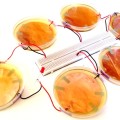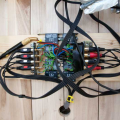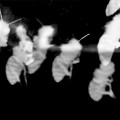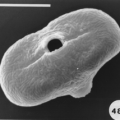Since 2009, we are researching the co-evolution between city honeybees and urban ecosystems in our OpenGreens and Bee Monitoring programs. Bee colonies are now threatened in all industrialized nations. Given that the survival of bees is crucial for human sustainability, there is a great urgency to improve by all means the ways in which colonies could thrive.
The research program surveys in an artistic way the multiple fields of interaction between honeybees and the (urban) ecosystem. It is remarkable to see how a bee population functions and evolves very much in accordance to the human activities we are developing around them: gardening and (urban) agriculture. The production of honey is different related to the flowers we grow, the plants we like, the garbage or pollution we produce. Bees are very responsive to the different biotopes that we share. Though we seem to have rather few insight into what constitutes the diversity of our surrounding living place, and that’s something we want to research on a deeper level. As bio-markers, bees can give us valuable information about living conditions in our continuous productive urban landscapes.
To monitor the bees in a non-intrusive way we are building Intelligent Beehives. This are hives that are augmented with sensors and sensory processing algorithms that analyse the quality of pollen and propolis as well as the behavior of the bees in order to monitor the state of the ecology in the surrounding areas. The Intelligent Beehives are distributed in a European network, the data are available online and the creation of local biological Corridors can be consulted in realtime.
The research towards Intelligent Beehives proceeds in different steps.
First step – the production of sustainable Beehives based upon existing models – is a collaboration between OKNO and the Fab Lab Barcelona. Here we work on an OpenStructures-version of the Warré beehive model (beekeeping for all).
The next step, a collaboration between AnneMarie Maes and Sony Research Lab Paris, is researching the design of organic beehives (form and materials based upon biomimicry) and integrate biosensors in a non-intrusive way. This research will give us detailed information about the behaviour of the colony in the hive and its relation to the environment.

This work is licensed under a Creative Commons Attribution-NonCommercial-NoDerivatives 4.0 International License.

The project ‘Guerilla Beehives’can have an exemplary meaning for the audience if it comes to the public perception sustainability. It is a collaboration between the arts, design and science.
This is the end of the anthropocene. We imagine an ecosystem where all actors collaborate to keep up the resilience of the system. As artists, gardeners, makers and thinkers, we collaborate with animals, plants, insects and bacteria. … (read more…)


As bio indicators, honeybees provide us with a constant stream of information on the environment (urban, countryside) on which they forage (activity, pollen, nectar). Diseases like colony collapse disorder and environmental problems like the use of pesticides could be analysed in a different way by monitoring and analysing the daily … (read more…)

Our initial intention is to install the Asus computer (with debian) and a Mackie mixing panel. Later we decide to swap that setup for a more performative one: an 8 channel Prosonus soundcard, the Asus with Debian for recording and sending the files over the network to a NAS (network attached storage) hard disk.
We will record 4 times 3 minutes an hour, every :00, :15, :30 and :45. The 8-channel … (read more…)

This time I want to do it differently. I will record at regular intervals the hum of the colony and analyse it thoroughly afterwards. I also want to link the sounds with the environmental sensor data (temp, humidity, solar radiation) in the surroundings of the apiary, with the sensor data inside the beehive (temperature, humidity and vibration of the comb) as well with video images in- and outside the … (read more…)

Many naturalists have studied aspects of animal behaviour throughout history. The modern discipline of ethology is generally considered to have begun during the 1930s with the work of Dutch biologist Nikolaas Tinbergen and by Austrian biologists Konrad Lorenz and Karl von Frisch, joint winners of the 1973 Nobel Prize in Physiology or Medicine. Ethology is a combination of laboratory and field science, with a strong relation to … (read more…)


The system is set up as a fully organic, cradle to cradle, circle. … (read more…)

The last weeks I colletected yet on several days pollen at the entrance of the beehives. I also have a pollen collected from spring this year.
On 21/22/23-8 I can work at the Chemical Engineering Lab of the VUB on the SEM (Scanning Electron Microscope). The SEM offers the possibility to make perfect 3D images at +20.000 enlargment scale. Ideal for photographing pollen and bee-parts as proboscis, receptors, e.g.
The lab is specialized in surface metals research. I work with Gizem Süngü, a future PhD student. … (read more…)

At Sony CSL in Tokyo I meet Masatoshi Funabashi. Masa is an expert in complex systems relations in ecologies. We talk about flowers and insects, and we decide to work with honeybees (among other insects) to collect usefull information on the ecosystem. The bees will work as … (read more…)